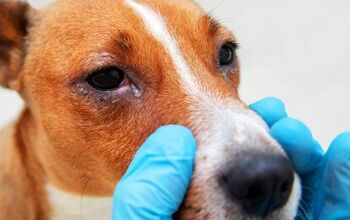Can Dogs Get Melanoma?

Melanocytes are special pigment cells that are responsible for a dog’s coat color. Without these cells, canines simply wouldn’t be as diverse and beautiful as we know them. But even though melanocytes can be viewed as a source of a dog’s uniqueness and lovely appearance, they can potentially be harmful as well. Just like humans, dogs can also be affected by melanoma, a type of cancer that originates in the melanocytes. In dogs, however, melanoma can develop in various locations, including the skin, mouth, eyes, and nail beds. While it can be benign in many cases, melanoma can also be malignant and can metastasize to other parts of the body.
While all breeds of dogs can get melanoma, it is important to know that certain breeds are more predisposed to melanoma, including Scottish Terriers, Poodles, Golden Retrievers, and Dachshunds. What is more, the sex of the dog is not a factor, as both males and females are equally susceptible to this illness. However, age is a very important factor that owners need to keep in mind. Research shows that most dogs who develop melanoma are 9 years or older, which means that seniors are those predominantly affected by this type of cancer. Still, it’s important to note that dogs of any age can have melanoma, even if it’s less frequent in younger canines.
Types of Dog Melanoma
It is also important to know that there are several types of melanoma, and each one affects a different part of the dog’s body and is presented with different symptoms.
- Skin (Cutaneous) Melanoma: This type of melanoma is found on the skin, often appearing as a dark, raised growth. Look for lumps or masses that might be pigmented or non-pigmented.
- Oral Melanoma: This type occurs in the mouth and can be particularly aggressive and fast-spreading. Initial symptoms include bad breath, excessive drooling, bleeding, and difficulty eating.
- Ocular Melanoma: As the name suggests, ocular melanoma affects the eyes and may impair your pet’s vision. Changes in eye color, visible masses, or vision problems are possible symptoms.
- Subungual Melanoma: A rarer type of cancer, subungual melanoma develops in the nail bed and can be very painful for the dog and prohibit walking. As it progresses, it may cause swollen, deformed, or discolored nails.
Can You Prevent Melanoma in Dogs?
While there are no guarantees, there are certain steps you can take to minimize your pet’s chances of being affected by melanoma in their lifetime. In addition to regular vet visits and thorough checkups for any changes in skin or fur, the most important thing you can do is minimize sun exposure. This is especially true for dogs with light-colored or thin coats, as they are more susceptible to UV radiation.
Providing shaded areas, using dog-safe sunscreens on exposed skin (like the nose, ears, and belly), and avoiding peak sun hours can help. Additionally, you can also opt for innovative products such as sun-protective clothes for dogs made from UPF 50+ fabrics which block the sun’s harmful rays.
Can Melanoma In Dogs Be Cured?
Of course, early detection and prompt reaction are critical when it comes to your pet’s outcome. If you spot any of the above-mentioned symptoms or notice your dog behaving strangely, don’t hesitate to contact your vet. They will perform a thorough physical examination and will notice irregularities that need further investigation. Some possible methods of determining melanoma are fine needle aspiration or biopsy, x-ray imaging, and histopathology.
In the case that a melanoma is found, your vet can present a range of options to treat it. Of course, the most common option is surgical removal. This is often the first line of treatment for localized melanoma. Removing the tumor can prevent it from spreading, especially if caught early. And for tumors that are not easily removable, radiation therapy can be effective. It helps to shrink the tumor and kill cancer cells.

A proud mama to seven dogs and ten cats, Angela spends her days writing for her fellow pet parents and pampering her furballs, all of whom are rescues. When she's not gushing over her adorable cats or playing with her dogs, she can be found curled up with a good fantasy book.
More by Angela Vuckovic

























